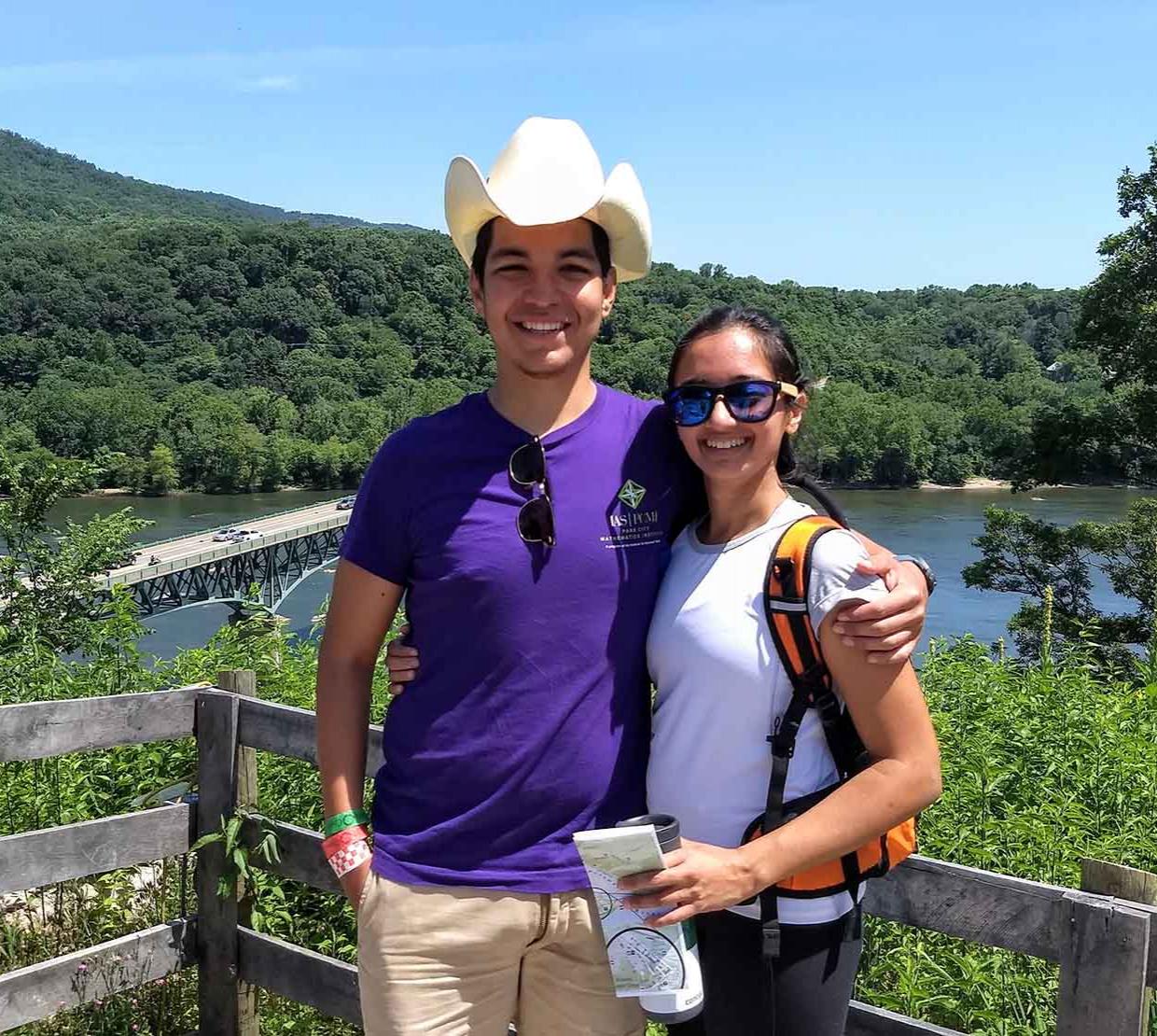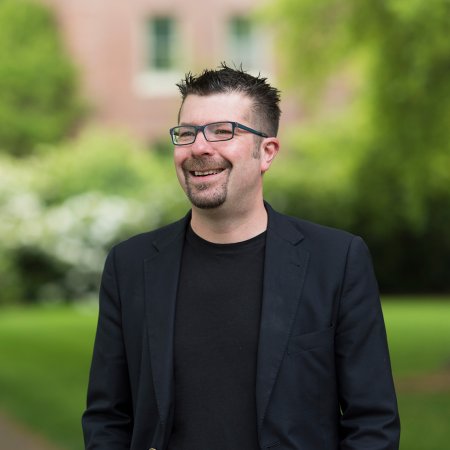The College of Science welcomes spouses Swati Patel and Axel Saenz Rodriguez who joined the Department of Mathematics as tenure-track assistant professors in September.
Patel was a postdoctoral researcher in the Department of Statistics at the University of Warwick in the United Kingdom before joining OSU. A mathematical biologist by training, Patel applies mechanistic models to understand genetics, population, and infectious disease dynamics that shape our world.
As a mathematical biologist, Patel brings new expertise to Oregon State University in a rapidly expanding field. At Warwick, she worked on transmission models of tropical diseases with the Neglected Tropical Diseases Modeling consortium and the Zeeman Institute for Systems Biology and Infectious Disease Epidemiology Research. Prior to that, she was a postdoc researcher at Tulane University.
Patel takes an active interest in promoting diversity in the discipline and is a co-founder of Math For All in NOLA conference. Started in 2019, Math for All is an annual conference on math education and research that has the purpose of fostering inclusivity in mathematics. She plans to hold a satellite conference at OSU this February.
Patel holds a Ph.D. in applied mathematics from the University of California Davis and a bachelor’s degree in integrated science and biology from Northwestern University.
Saenz Rodriguez’s research involves probabilistic models and simulations of integrable dynamical systems or systems with definite mathematical properties. His research explores the interaction of geometry, representation theory and probability.
Saenz Rodriguez was a postdoctoral researcher at the University of Warwick, Tulane University and the University of Virginia where he was the Mary Ann Pitts Postdoctoral Fellow in the Department of Mathematics.
Saenz Rodriguez earned his Ph.D. in mathematics from UC Davis and his bachelor’s in applied mathematics from Columbia University.
What are your first impressions of Oregon State?
Patel: We are impressed with Corvallis, the landscape, the mountains and the city. We liked the friendliness of the mathematics department when we interviewed here. That really stuck with us.
Saenz Rodriguez: We like the friendly community in the math department. Also, in this last week I have enjoyed teaching. The students are sharp and they are participating. And its maybe because they haven’t been in a classroom for a while, but it has been a good start to teaching again.
Where did you grow up? Can you describe early influences that helped you develop an interest in mathematics and science?
Patel: I grew up in the suburbs of Chicago. My earliest influences were probably my parents — they emphasized science and math and wanted me to become a doctor. But then when I got to college, I started to get involved in research. I was more interested in biology because I like nature, animals and plants. I pursued biology as an undergrad, and did research in biology.
It wasn't until two years after my I finished my undergraduate degree that I decided I wanted to pursue mathematics. It was really because I was reading biology papers and I gravitated towards the papers that relied on quantitative methods and mathematical methods. I found myself interested in that and I wanted to be able to understand them better. Eventually, that led me to pursue mathematics.
Saenz Rodriguez: I grew up in Mexico until I was 11. At that point, we moved to Oklahoma because my dad got a job offer in Tulsa at a ceramic tile company. My dad was the first influence for me because he is an electrical engineer. I grew up in a very science-based household and we are all very science-oriented and logical. Both my older brothers are in computer science and mechanical engineering.
When I was about 13, I watched a PBS documentary called the Elegant Universe by Brian Greene. That really sparked my imagination and curiosity. And I started trying to learn more math and physics, actually more physics, but then the more I got into physics the more interested I got in math. I started pursuing those subjects in high school.
In Oklahoma, I went to the Oklahoma School of Science and Mathematics (OSSM), which is a math and science state-funded boarding school for juniors and seniors. They accept 60 students each year from throughout the state. That was a big influence because it exposed me to a lot of advanced level math and physics at an early age where it led me to pursue the subjects more seriously.
How would you explain your research interests to a broader audience?
Saenz Rodriguez: I work in math, physics, probability and non-equilibrium statistical mechanic models. Those are very technical terms. I work on the variation of random growth models. One specific example is the growth of a bacteria colony in a petri dish where the expected shape is going to be something circular and we try to study the fluctuations around this shape. Moreover, in my research, I look at idealized models with this type of random growth. They are theoretical and deviate a lot from a precise description of that specific model found in nature.
I look at very specialized models that have a lot of symmetries to them, where you can apply very abstract and technical mathematical methods. There is an overarching idea of universality here in that if we can describe the phenomena for these idealized models then it can be generalized to models in nature. So, we're trying to look at idealized models with a lot of mathematical structure that will apply to a wide class of models.
Patel: I work on models in population dynamics, evolution and infectious disease. I study how populations grow, how they change, and adapt to their environments, and how infectious diseases spread over time, and space. I work on modeling these things for different types of diseases or populations that we're interested in and try to understand how that happened or is happening.
Do you bounce ideas of each other or collaborate on projects?
Saenz Rodriguez: We like to bounce ideas off each other when we're doing research. We always have plans of trying to do something together. But up to this point, it seems, for the most part, math biology and mathematical physics are fairly disjoint. But we both have worked on probability models so that at some level there is an overlap.
What attracted you most to Oregon State?
Patel: One big thing was that we were both offered positions here. It worked out very nicely for us to both be in tenure track positions at Oregon State.
Saenz Rodriguez: They have a policy in place for dual hires and not all universities do. This led us to think that Oregon State is a place that is family friendly and that is important to us.
Patel: The math department emphasized that they were interested and thoughtful about diversity initiatives in their posting for the position. The program emphasized values that are important to us. And we looked at Oregon State’s website and it had the diversity initiative plan for how they're going to make sure that the environment is inclusive and supports diversity in faculty, staff and students. That right away was a big thing that we liked about Oregon State. They are supporting families. They are supporting careers. I think these hiring policies really do support women in the field.
Saenz Rodriguez: The cherry on top of all these things is that we really like Corvallis. We like small towns where we can walk to work. We like Oregon and it is an environmentally-friendly place, which is also important to us.
What excites you as a researcher coming into Oregon State? Math biology is a thriving area of research here. What opportunities are you looking forward to?
Patel: This was another thing that excited me about Oregon State. There is a lot of potential for collaborations with the integrative biology department and the Carlson College of Veterinary Medicine. Within mathematics, I have seen a lot of collaborations that are across these disciplines. And I am looking forward to building off of that.
What are your thoughts on how to foster more diversity and equity in mathematics?
Saenz Rodriguez: Over the last year, while we were still in England, I started having conversations with different faculty at OSU, trying to gauge what we can do as a whole to foster diversity.
The most effective way in our position right now is through graduate recruiting and postdoc recruiting, and that can have a trickle-down effect. So, I think the first goal for me is to have an impact on graduate recruiting for Oregon State and bring in more diverse graduate students.
Patel: One big thing for me is to shift the culture around mathematics and academia or try to make the culture more inclusive. So, it’s not just people who have a history of being in those fields that are able to be in them. At Tulane, I started Math for All in New Orleans with two graduate students and am planning to bring that here. The idea behind the conference was to have an inclusive environment for people to discuss mathematics research as well as teaching. And we brought together a lot of universities in New Orleans, many of which are four- year institutions and HBCUs (historically Black colleges and universities) to widen the access to research opportunities. We wanted to come together and extend the network within the universities in New Orleans to discuss mathematics.
What are your hobbies and interests?
Patel: We like exploring the outdoors. So that's another reason why we really like Oregon. I'm really into physical and mental health and well-being. I do a lot of yoga, meditation, and I read a lot of books on mindfulness and secular Buddhism. I also really like to dance — ballet, jazz and aerial acrobatics.
Saenz Rodriguez: I like the sports setting and being active outdoors. I run a few times a week. I am on Strava and I track everything and that certainly takes up a bit of my time. I like soccer and enjoy surfing with friends. I also enjoy cooking and baking and recently got into making bread.




